This is what the economy of the Amazon…
10 July, 2024
Tuesday 26 march 2024
Header photo: Isabel Yalico, Coordinator of del Comité de Gestion de la Reserva Nacional Tambopata in Madre de Dios. © Giancarlo Shibayama
A gender baseline study of IUCN NL, carried out by Eliana Rojas Torres, gathered data about the struggles of women environmental defenders in Madre de Dios. This study, part of the PIDDA programme, has compiled data from interviews, focal groups and fieldwork[1]The study was made within native communities of FENAMAD and the amortiguation area of Tambopata. to reveal the systemic obstacles these women defenders face, including legal and administrative obstacles and gender-based violence. Results shows that their story is not just one of adversity, says Mariel Cabero, but also ‘one of resilience and a determined fight for environmental justice and gender justice. The situation in Madre de Dios serves as a case study and a reminder of the urgent need for an integrated approach that addresses the environmental, legal and social challenges faced by women environmental defenders.’
Mariel Cabero, expert environmental justice‘Women’s fight for their territories is intertwined with their struggles for gender equality and recognition of their rights.’
Women defenders, often on the frontline, encounter systemic obstacles exacerbating the dynamics that put them in a vulnerable position, such as socio-economic inequalities and cultural norms that marginalise their voices. ‘Factors like class and ethnicity intersect with gender, further complicating the disparities and risks women face,’ explains Cabero. ‘Their fight for their territories is thus intertwined with their struggles for gender equality and recognition of their rights.’
Recent reports, including those of Global Witness,[2]Global Witness. (2023). Standing firm: The Land and Environmental Defenders on the frontlines of the climate crisis. Link to report. have underscored Peru as one of the top ten most dangerous countries for environmental defenders, with Madre de Dios being particularly risky. Since April 2020, the country has seen seventeen environmental defenders killed, highlighting the extreme risks associated with protecting this key ecosystem.
Legal and illegal gold mining is the most impactful industry in Madre de Dios. Because of their often already complicated situation, women are differently affected than men by gold mining and related activities. The use of mercury in gold extraction — estimated at 45 to 50 tonnes annually in the region alone[3]Gardner, E. (2012). Peru battles the golden curse of Madre de Dios. Link to article. — poses a severe risk, contaminating water sources and leading to health hazards among the local communities. Studies have shown that in gold mining regions, communities can have mercury levels that are significantly higher than the limits recommended by the World Health Organisation.
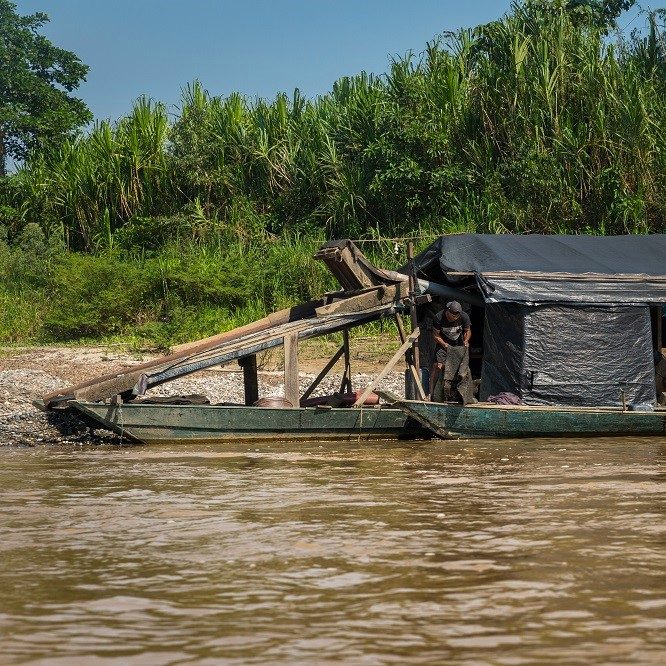
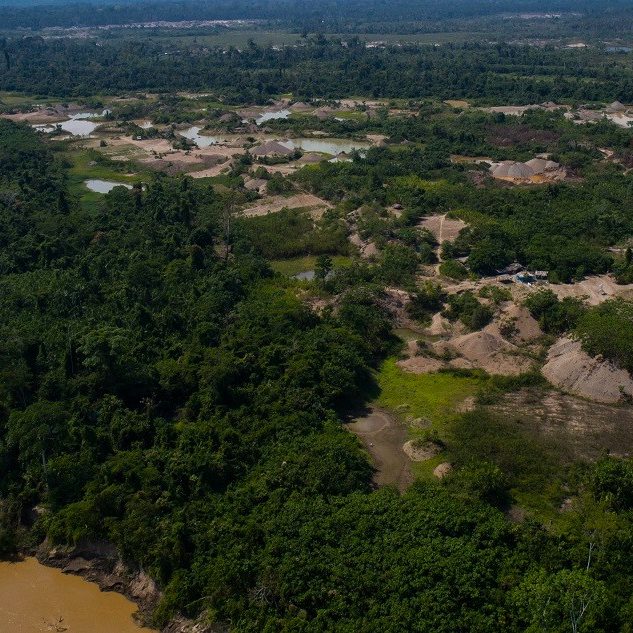

Study results confirm that women in Madre de Dios face different types of violence impeding their basic rights and freedoms. Driven by a complex interplay of factors such as gender inequality, patriarchal norms and illicit and extractive activities.
Below we share overview of the various forms of violence women in Madre de Dios endure, highlighting the profound challenges women environmental defenders face in their struggle to defend their territories and livelihoods.
Women’s freedom to move through their territories is compromised by the presence of miners, loggers, and criminal gangs, limiting their access to essential services and daily activities. For instance, traveling to agricultural fields or attending educational institutions has become fraught with danger, forcing some to abandon their studies or alter their routines drastically.
The illegal mining and deforestation degrades rivers and land, vital sources for community’s livelihoods. Women are confronted differently with the direct consequences of such pollution, for example by decreased food security due to contaminated water and fish.
In their role as environmental defenders, women are often targeted with legal actions, including accusations and intimidation. Such criminalisation seeks to undermine their advocacy efforts, leaving them entangled in costly and time-consuming legal battles.
Women defenders face societal backlash, including derogatory comments and public shaming, aimed at discrediting their work and deterring their participation in community advocacy.
The financial burden of advocacy, including travel and legal costs, places significant strain on women and their families. Additionally, extortion by criminal groups further depletes their resources, threatening their economic stability and ability to maintain their homes and lands.
Sexual harassment and assault are reported as part of the broader pattern of violence against women in these areas, often perpetrated by those involved in illegal extractive activities.
The constant threats and fear of violence have profound mental health impacts among the women and, by extension, affecting their families. The psychological toll of living under such conditions cannot be overstated, affecting all aspects of their well-being.
The social and environmental crises also profoundly impact the younger generation, exposing them to risks of exploitation, substance abuse, and the traumatic effects of witnessing or experiencing violence. This influences their future and the long-term resilience of their communities.
The different types of violence, which are deeply interconnected, underscore the urgent need for comprehensive strategies to protect women defenders and their territories. The PIDDA project sheds light on the situation of women environmental defenders to promote their and their communities’ effective participation in the development of public policy. Cabero: ‘Our activities include providing information contributing to improved, gender-sensitive national policy protecting environmental defenders, but also working with women so they better protect themselves, through our partners in Madre de Dios.’
PIDDA is a collaboration of Sociedad Peruana de Derecho Ambiental (SPDA), IUCN NL and two partner organisations in Madre de Dios. The project is being supported by Agence Française de Développement (AFD).
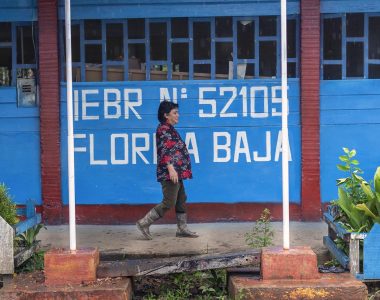

Even though women defenders find themselves in a very adverse context, certain factors and conditions enable women to continue their determined fight to protect their territories.
Sharing experiences and facilitating collaboration among women catalyses female leadership, shows the study. Exchange fosters a supportive network where women can learn from each other, share best practices and encourage one another in their leadership journeys. Another enabling factor is providing organisational support to locally-led initiatives, specifically those promoting female leadership. These organisations provide resources, mentorship and platforms women to enhance their leadership skills and visibility in their communities.
Workshops organised by these or other organisations should be developed with, about and for Indigenous women, oriented towards the Indigenous movement of Madre de Dios and have collective rather than an individual perspective. It is essential to include a solid intercultural approach in the design of workshops, without using too much technical or legal language.
The study also recommends to organise workshops locally, so women do not have to travel elsewhere. This does not only stimulates the participation of women, but also promotes greater awareness at the community level.
Last but not least, organising inclusive workshops, in which both men and women participate, is important. This enables addressing human rights and Indigenous rights issues, applying a gender perspective, along with topics related to women’s rights and gender-based violence, to be addressed more comprehensively.
Mariel Cabero, expert environmental justice‘Peru stalling the ratification of the Escazú Agreement highlights systemic barriers impeding progress in access to rights, environmental justice and defenders’ safety.’
The challenges faced by women environmental defenders in Madre de Dios mirror a global crisis, in which environmental activism intersects with gender-based violence and injustice. This phenomenon is not isolated, but reflects a widespread pattern across continents where defenders confront similar threats ranging from legal harassment to physical violence. The situation in Madre de Dios, characterised by brave women protecting their territories against illegal mining and environmental degradation, is emblematic of the struggles faced by countless other women globally.
The data of the study in Madre de Dios highlights the urgent need for a global response that recognises the specific risks faced by women environmental defenders. International and local civil society efforts should push for adherence to international frameworks, such as the Escazú Agreement. Peru has not yet ratified the agreement, despite having it signed it in 2018. It is significant in different ways, explains Cabero, as ‘Peru stalling the ratification of the Escazú Agreement highlights systemic barriers impeding progress in access to rights, environmental justice and defenders’ safety.’
‘The challenging but determined journey of women environmental defenders in Madre de Dios clearly resonates with the global fight to safeguard nature. It is a call for collective action towards environmental justice and gender equality,’ she concludes.
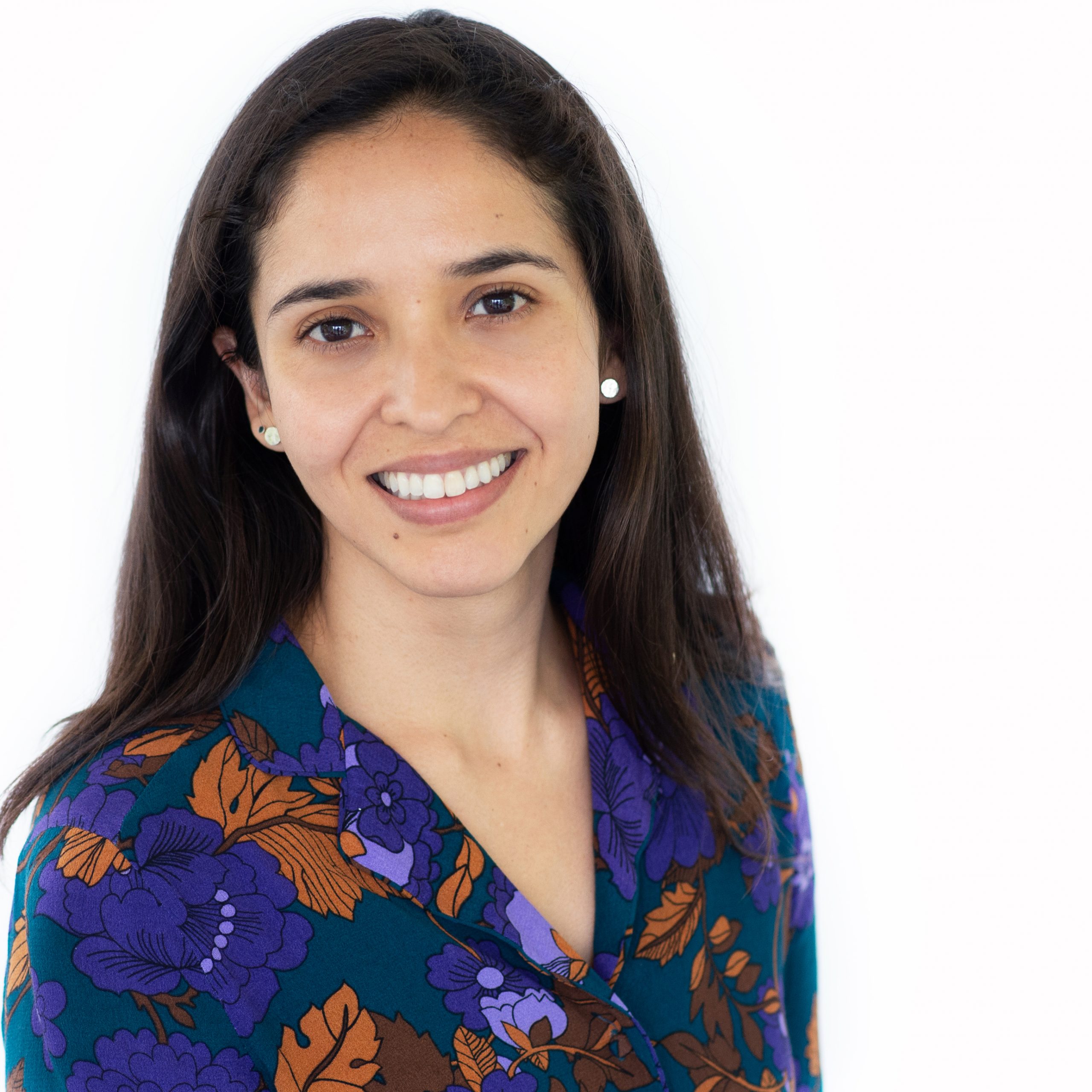

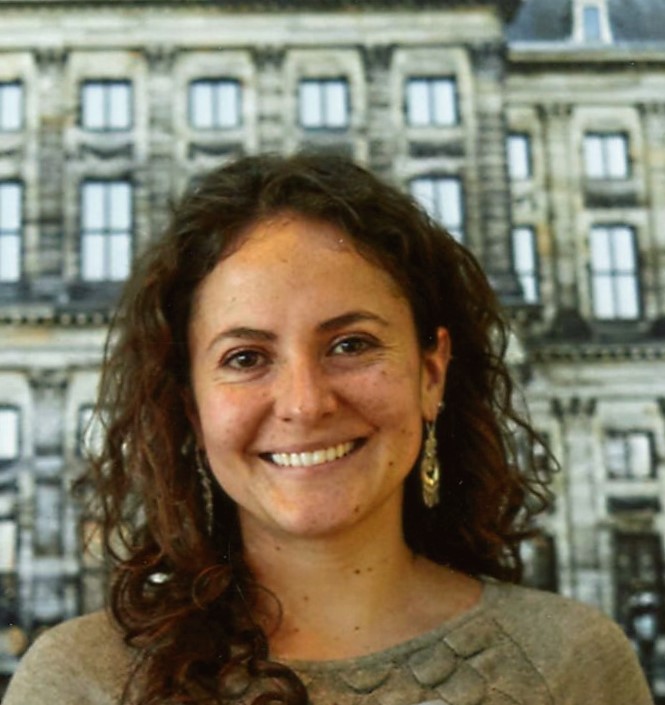

| ↑1 | The study was made within native communities of FENAMAD and the amortiguation area of Tambopata. |
|---|---|
| ↑2 | Global Witness. (2023). Standing firm: The Land and Environmental Defenders on the frontlines of the climate crisis. Link to report. |
| ↑3 | Gardner, E. (2012). Peru battles the golden curse of Madre de Dios. Link to article. |